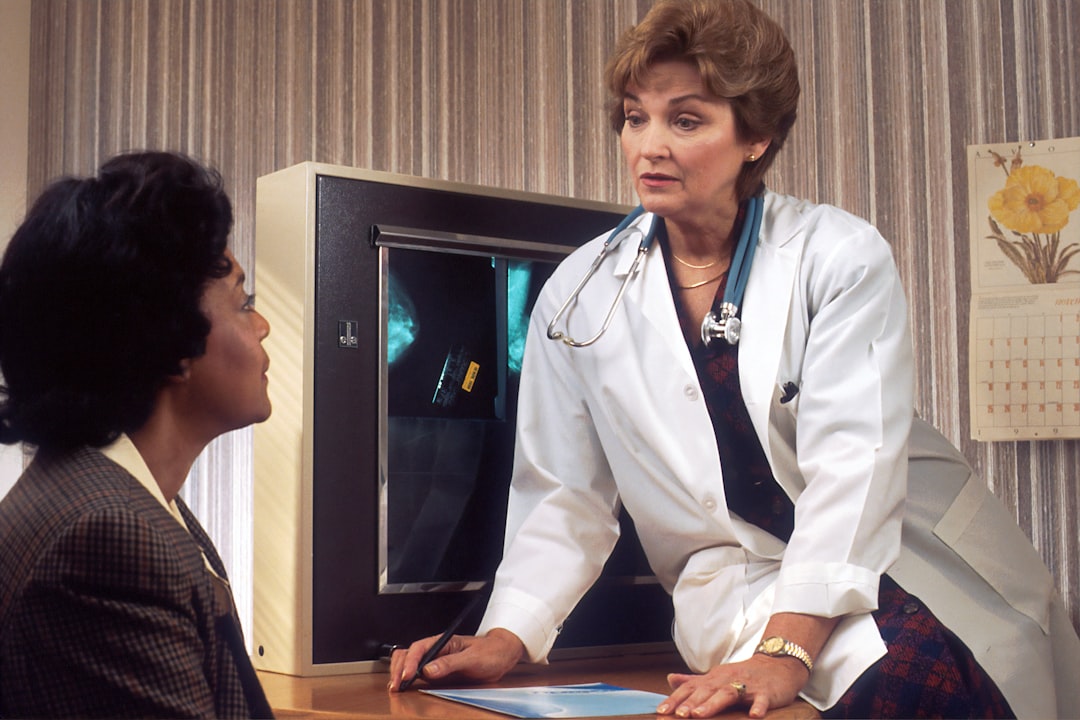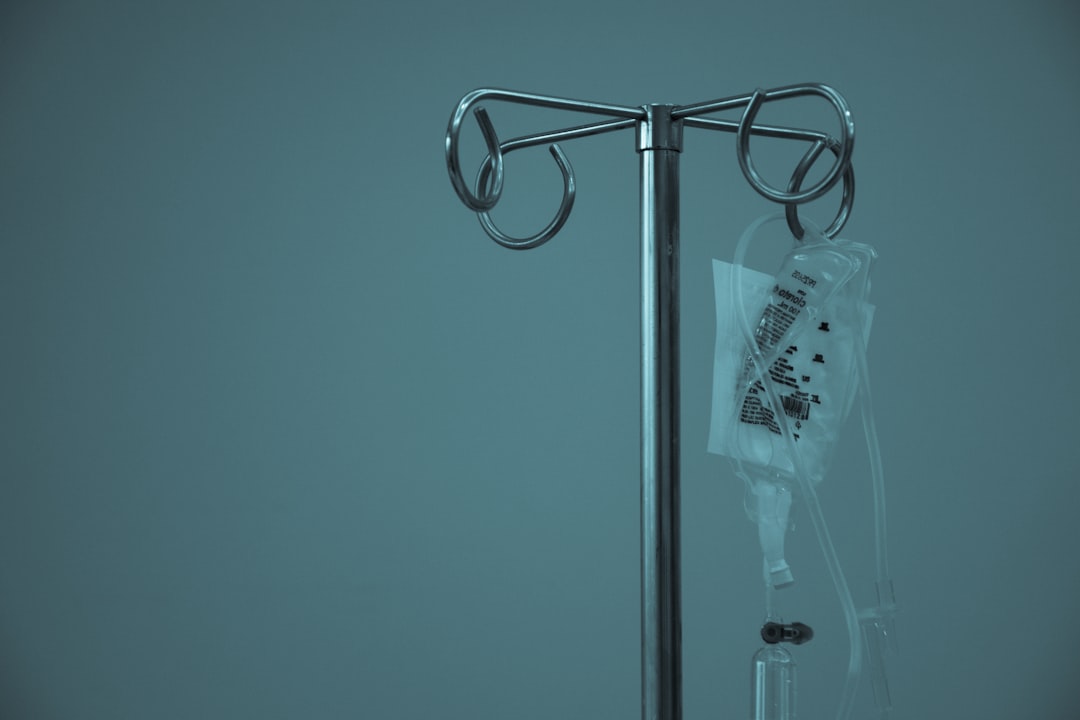Common Types of Medication Errors
Medication errors are a significant concern in the field of healthcare, affecting patient safety and treatment outcomes. These errors can occur at any stage of the medication process, from prescribing to administration, and can have serious consequences. Understanding the common types of medication errors is crucial for healthcare professionals to minimize risks and improve patient care.
One prevalent type of medication error is prescribing errors. These occur when there is an incorrect drug selection for a patient, which might involve choosing the wrong dosage, frequency, or form of a medication. Prescribing errors can stem from miscommunication between healthcare providers or insufficient knowledge about a patient's medical history. For instance, prescribing a drug that interacts negatively with another medication the patient is taking can lead to adverse effects.
Dispensing errors are another common category, occurring in pharmacies when medications are prepared and given out incorrectly. This might involve dispensing the wrong drug, incorrect labeling, or providing inaccurate instructions on how to take the medication. Such errors often arise from human mistakes like misreading prescriptions or confusion due to similar drug names or packaging.
Administration errors happen during the actual delivery of medication to patients. These include giving the wrong dose, administering it via an improper route (such as orally instead of intravenously), or at the wrong time. These mistakes are often linked to distractions in busy clinical environments or inadequate training on specific administration techniques.
Finally, monitoring errors occur when there is insufficient assessment and follow-up on how a patient responds to prescribed medications. Failing to monitor can lead to unchecked side effects or ineffective treatment outcomes if adjustments aren't made based on how well a patient responds.
To mitigate these types of medication errors, healthcare facilities must implement robust systems for double-checking prescriptions and enhance communication among providers. Utilizing technology such as computerized physician order entry (CPOE) systems can also reduce human error by automating some parts of the prescribing and dispensing processes. Continuous education and training for healthcare staff play an essential role in maintaining awareness about potential pitfalls in medication management.
In conclusion, while medication errors are diverse and complex issues within healthcare settings, recognizing their common types-prescribing, dispensing, administration, and monitoring-is vital for developing effective prevention strategies. Through improved systems and practices aimed at reducing these errors' prevalence, we can work towards safer therapeutic outcomes for all patients involved in medical care processes.
Causes and Contributing Factors
Medication errors are a significant concern in healthcare systems worldwide, posing risks to patient safety and wellbeing. Understanding the causes and contributing factors behind these errors is essential for developing effective strategies to prevent them.
One of the primary causes of medication errors is human error, which can occur at various stages of the medication process. These errors often stem from factors such as fatigue, distraction, or inadequate training among healthcare professionals. For instance, a nurse working long shifts may inadvertently administer the wrong dosage due to exhaustion. Similarly, distractions in a busy hospital environment can lead to mistakes during prescription writing or dispensing.
Communication breakdowns also play a crucial role in medication errors. Miscommunication between healthcare providers, patients, or pharmacists can result in incorrect prescriptions or dosages being administered. This is particularly evident during transitions of care, such as when a patient moves from one department to another within a hospital or from hospital care to home care. During these transitions, vital information about medications may be lost or misinterpreted, leading to potential errors.
Another contributing factor is the complexity of healthcare systems and processes. With an increasing number of medications available on the market and more complex treatment regimens being prescribed, there is greater room for error. The use of similar-sounding drug names or packaging that looks alike further complicates this issue, increasing the likelihood of mix-ups.
Technological factors also contribute significantly to medication errors. While electronic health records (EHRs) and computerized physician order entry (CPOE) systems have been implemented to reduce these errors, they are not foolproof. Poorly designed interfaces or software glitches can lead to incorrect data entry or misinterpretation by healthcare workers unfamiliar with the technology.
Furthermore, organizational culture and policies can influence the prevalence of medication errors. Institutions that do not prioritize patient safety and do not encourage reporting and analyzing near-misses may fail to address underlying issues effectively. A culture that penalizes individuals for mistakes rather than learning from them discourages open communication about potential problems.
In conclusion, medication errors result from a complex interplay of human factors, communication issues, technological challenges, and organizational influences. Addressing these requires comprehensive strategies focusing on improving training programs for healthcare professionals, enhancing communication protocols across all levels of care delivery, refining technological tools used in medicine administration processes while fostering an institutional culture prioritizing transparency over blame-shifting when addressing potential mishaps within clinical settings ultimately aimed towards safeguarding patients' well-being comprehensively against preventable harm caused through inadvertent medicinal mismanagement occurrences today globally prevalent yet avoidably remediable if tackled systematically proactively therein addressed accordingly forthwith thereof henceforth thereto indeed duly noted thus said hereinbefore mentioned above thereby stated conclusively articulated succinctly expressed hereinabove detailed therefore concluded overall finally summarized last but certainly not least emphasized highlighted accentuated appropriately fittingly rightly suitably aptly properly correctly accurately effectively efficiently satisfactorily sufficiently adequately thoroughly successfully completely absolutely entirely positively convincingly persuasively authoritatively fundamentally primarily chiefly mainly essentially importantly significantly notably outstandingly exceptionally remarkably extraordinarily uniquely singularly exclusively explicitly implicitly tacitly subtly delicately gently softly lightly tenderly kindly warmly affectionately lovingly compassionately empathetically sensitively caringly thoughtfully considerately attentively heedfully mindfully watchfully vigilantly cautiously carefully prudently judiciously wisely sagaciously sensibly rationally logically reasonably sanely soundly rightly fairly justifiably legitimately deservedly fittingly purposefully intentionally deliberately consciously voluntarily willingly freely openly frankly candidly honestly truthfully straightforward blunt plain simple clear direct unambiguous unequivocal unmistakable undeniable irrefutable incontrovertible
Impact on Patients and Healthcare Systems
Medication errors, a pervasive issue within healthcare systems worldwide, have far-reaching implications not only for individual patients but also for the broader healthcare infrastructure. These errors, which can occur at any stage of the medication process-from prescribing and dispensing to administering and monitoring-pose significant risks that extend beyond immediate health consequences.
For patients, the impact of medication errors can be devastating. Physically, these mistakes can lead to adverse drug reactions ranging from mild allergic responses to severe, life-threatening conditions. In some cases, incorrect dosages or wrong medications may exacerbate existing medical conditions or result in irreversible damage. Beyond physical harm, the psychological toll on patients is profound; trust in healthcare providers can be severely undermined, leading to anxiety and fear regarding future medical treatments.
Moreover, the ripple effects of medication errors often manifest in the form of increased healthcare costs. Patients who experience these errors may require additional treatments or extended hospital stays to manage complications arising from such mistakes. This not only places a financial burden on individual patients and their families but also strains already overtaxed healthcare systems. Hospitals and clinics face increased operational costs due to prolonged patient care needs and potential legal liabilities associated with negligence claims.
Healthcare systems further suffer from diminished efficiency as resources are diverted away from routine care towards managing preventable incidents caused by medication errors. The need for regulatory compliance increases administrative burdens and necessitates continuous staff training programs aimed at error reduction-a necessary yet resource-intensive endeavor.
Addressing medication errors requires a multifaceted approach focused on systemic changes within healthcare settings. Implementing robust electronic prescribing systems with built-in error-checking capabilities can significantly reduce human error rates. Encouraging open communication among multidisciplinary teams fosters an environment where potential errors are more likely to be identified before they reach the patient.
Education plays a crucial role in mitigating these issues; ongoing training for healthcare professionals about best practices in medication management is essential. Additionally, empowering patients through education about their medications enhances safety by enabling them to act as active participants in their own care.
In conclusion, while medication errors pose significant challenges for both patients and healthcare systems alike, proactive measures rooted in technological advancements and continuous education can mitigate these impacts. By prioritizing patient safety through comprehensive strategies encompassing prevention, detection, and response mechanisms, we can work towards minimizing the occurrence of such detrimental events and fostering a safer healthcare environment for all involved parties.
Strategies for Prevention and Reduction
Medication errors represent a significant concern in the healthcare industry, with potential consequences ranging from minor discomfort to severe harm or even death. The complexity of modern medical treatments, coupled with the human factor, means that errors can occur at any stage of the medication process-from prescribing and dispensing to administration and monitoring. Therefore, implementing effective strategies for prevention and reduction is imperative to enhance patient safety and improve healthcare outcomes.
One of the primary strategies for preventing medication errors is fostering a culture of safety within healthcare settings. This involves creating an environment where healthcare professionals feel empowered to speak up about potential risks without fear of retribution. Encouraging open communication among team members can lead to early identification and rectification of possible medication errors before they reach the patient. Regular training programs focusing on safe medication practices are also crucial, ensuring that staff remains informed about the latest guidelines and technologies.
Technology plays a vital role in minimizing medication errors. The use of computerized physician order entry (CPOE) systems can significantly reduce prescription errors by eliminating issues related to handwriting interpretation and providing automatic checks for drug interactions or allergies. Additionally, barcode scanning technology during dispensing and administration ensures that patients receive the correct medications at the right dosages.
Standardizing procedures across all stages of medication management is another effective strategy. Developing clear protocols and checklists helps ensure consistency in practice, reducing variability that might lead to mistakes. For instance, implementing double-check systems where a second healthcare professional verifies high-risk medications can further mitigate error risk.
Patient involvement is also an essential component in preventing medication errors. Educating patients about their medications empowers them to become active participants in their care. Providing clear instructions on how to take their medications correctly and encouraging them to ask questions if they have concerns fosters better understanding and compliance, which can prevent many common errors.
Finally, continuous monitoring and evaluation processes are necessary for identifying trends or recurring issues that may lead to medication errors. Establishing robust reporting mechanisms allows institutions to track incidents systematically, learn from mistakes, and develop targeted interventions aimed at error reduction.
In conclusion, preventing and reducing medication errors requires a multifaceted approach integrating cultural change, technological advancements, procedural standardization, patient engagement, and ongoing evaluation. By addressing these areas collectively, healthcare providers can create safer environments that protect patients from preventable harm while optimizing therapeutic outcomes.
Role of Technology in Minimizing Errors
In the modern healthcare landscape, technology plays a pivotal role in minimizing medication errors, which are among the most prevalent and dangerous mistakes that can occur in clinical settings. Medication errors can lead to adverse drug events, prolonged hospital stays, increased healthcare costs, and in severe instances, even fatalities. As the complexity of healthcare continues to evolve, integrating advanced technological solutions has become essential in ensuring patient safety and improving overall healthcare outcomes.
One of the foremost technological advancements that has significantly reduced medication errors is the implementation of electronic prescribing (e-prescribing) systems. These systems allow healthcare providers to send prescriptions directly to pharmacies electronically, eliminating the risk of misinterpretation due to poor handwriting or unclear verbal communication. E-prescribing also incorporates decision-support tools that alert prescribers about potential drug interactions, allergies, or incorrect dosages before a prescription is finalized. This proactive approach ensures that many common errors are caught early in the prescribing process.
Bar-coded medication administration (BCMA) is another innovation that has transformed how medications are dispensed and administered at the point of care. By scanning barcodes on both patient identification bands and medication packaging, BCMA systems verify that patients receive the correct drugs at the appropriate doses and times. This method provides an additional layer of verification beyond human checks and balances, thus reducing human error associated with manual processes.
Moreover, computerized physician order entry (CPOE) systems have revolutionized how orders for medications are placed within hospitals. These platforms replace traditional paper-based orders with electronic inputs that are directly integrated into patients' digital health records. CPOE systems flag potential issues such as duplicate therapies or contraindications with existing treatments, effectively minimizing risks associated with complex treatment regimens.
Pharmacy automation technologies also contribute significantly to reducing medication errors by streamlining dispensing processes. Automated dispensing cabinets (ADCs) ensure accurate storage and retrieval of medications while maintaining meticulous records of inventory usage and access logs. Robotics in pharmacy settings enhance precision by accurately counting doses and preparing individual prescriptions without human intervention.
Lastly, telemedicine solutions provide remote monitoring capabilities for patients managing chronic conditions who require ongoing pharmacotherapy adjustments. Wearable devices can track vital signs indicating how well a patient responds to their current treatment plan; these data points feed into analytics platforms that help physicians make informed decisions regarding necessary changes promptly.
While technology offers immense promise in mitigating medication errors across various stages from prescribing through administration phases-it's crucial not solely rely on it entirely but complement its application alongside rigorous training programs focused around cultivating strong awareness about safe practices among all stakeholders involved directly handling pharmaceuticals within organizations committed towards achieving excellence continuously striving improve quality care delivered every day tirelessly serving communities entrusted hands safeguarding lives entrusted them importantly remember never underestimate power teamwork collaboration multidisciplinary teams working together harmoniously achieving shared goals vision ultimately leading positive outcomes everyone involved journey lifelong learning growth development progress made possible thanks collective efforts humanity united common cause benefitting society whole brighter healthier future awaits us all embrace wholeheartedly move forward courageously confidently knowing we're capable accomplishing anything set minds hearts truly believe ourselves others around uplift inspire support encourage believe always best interests heart mind soul spirit intertwined beautifully symbiotic relationship nurtured lovingly carefully thoughtfully diligently purposefully intentionally genuinely honestly authentically truthfully sincerely humbly gratefully joyously harmoniously peacefully contentedly fulfilled abundantly blessed richly deeply profoundly eternally infinitely boundlessly graciously mercifully compassionately empathetically kindly gently warmly softly tenderly lovingly faithfully devotedly loyally unwaveringly steadfastly resolutely determinedly persistently tenaciously resiliently courageously bravely fearlessly boldly audaciously adventurously creatively
Case Studies and Real-world Examples
Case studies and real-world examples serve as invaluable tools in understanding the multifaceted issue of medication errors. These narratives not only highlight the severity and potential consequences of such errors but also provide insights into preventive strategies that can be employed to enhance patient safety.
Consider the case of Emily, a young patient who was admitted to a hospital for a routine surgery. During her recovery, she was prescribed a pain medication. Unfortunately, due to a miscommunication between the healthcare team and an unclear handwritten prescription, Emily received ten times the intended dose. This led to severe complications that could have been life-threatening. Emily's story underscores how even seemingly minor oversights in communication or documentation can spiral into significant medical crises.
Another illustrative example is that of an elderly man named John, who was managing multiple chronic conditions requiring various medications. One day, his pharmacy dispensed the wrong dosage of his blood pressure medication due to similar packaging with another drug brand. This error went unnoticed until John ended up in the emergency room with dangerously low blood pressure levels. His experience highlights the critical role pharmacists play in double-checking prescriptions and ensuring that patients receive correct medications.
These cases are not isolated incidents but reflect common challenges faced within healthcare systems globally. The World Health Organization estimates that hundreds of thousands of people die each year from preventable medication-related errors worldwide-errors stemming from systemic issues like inadequate staffing, lack of training, or flawed processes rather than individual negligence alone.
To mitigate these risks, healthcare facilities are increasingly adopting technological solutions such as electronic prescribing systems which reduce human error by automating prescription entries and cross-referencing them against known allergies or contraindications. Additionally, barcode scanning technology during medication administration acts as another layer of verification ensuring patients receive correct dosages at appropriate times.
Moreover, fostering a culture that encourages reporting and open discussion about near-misses without fear of retribution is crucial for learning and improvement. Regular training sessions for healthcare providers on effective communication skills and updated protocols further empower them to prevent errors proactively.
In conclusion, case studies and real-world examples offer profound lessons on how medication errors occur and their potential impacts on patients' lives. While they illustrate systemic weaknesses within healthcare delivery models, they also point towards practical solutions rooted in technology enhancement, process optimization, and cultural shifts towards transparency-all aimed at safeguarding patient health effectively.





